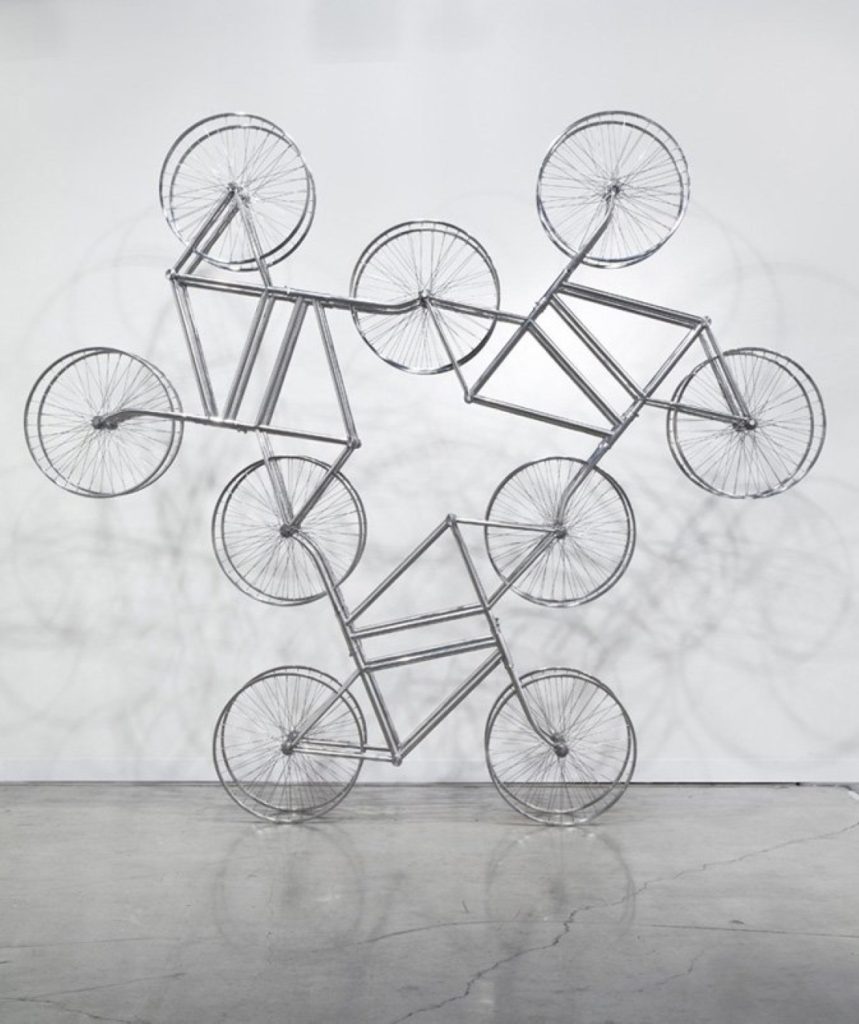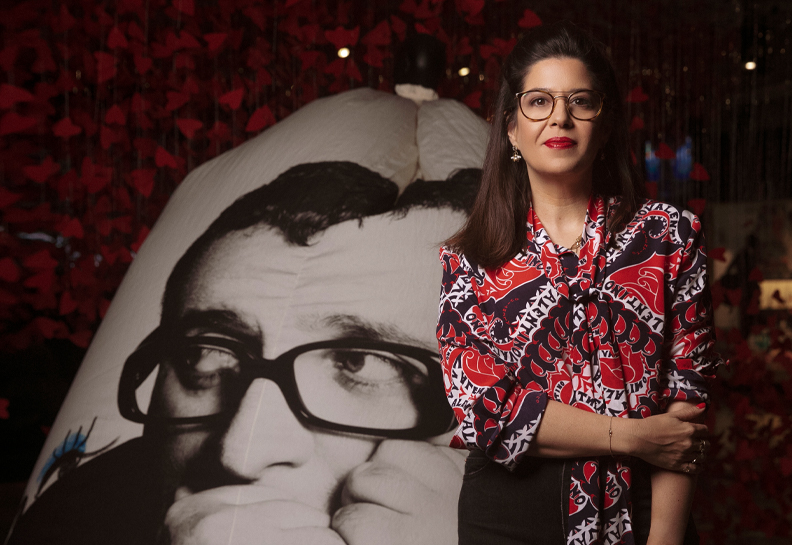A New Materialistic Order
Gili Yuval ponders what esteemed Chinese artist Ai Weiwei’s exhibition, currently showing in London, and last year’s ‘Free Wheel’ exhibition at the Museum, have in common.
Gili Yuval ponders what esteemed Chinese artist Ai Weiwei’s exhibition, currently showing at the Lisson Gallery in London, and last year’s ‘Free Wheel’ exhibition at Design Museum Holon, have in common.
Showing in the main exhibition space at London’s Lisson Gallery are three new objects from the ‘Forever’ series by Chinese artist Ai Weiwei. The series consists of complex structures made from metal bicycles, gigantic versions of which were exhibited in the past year in Toronto and Taiwan. In comparison, the versions Weiwei created especially for the Lisson Gallery seem like a simplified miniature model, a kind of prototype.
Ai Weiwei Forever Bicycles Toronto 2013
If we set aside for a moment Weiwei’s weight as a critical artist and human rights activist, from a purely technocratic perspective it is evident that his focus in this exhibition is on materials, shapes, and structures.

The objects in the exhibition present his ability to use a familiar shape to create an object with a new meaning. Thus for example, in the gallery’s courtyard seemingly soft leather armchairs turn into cold, heavy, marble armchairs that still maintain (only outwardly) the characteristics of leather armchairs, for example folds of material and imagined softness. Similarly, handcuffs become an intriguing object when the rigid metal is replaced by smoothed wood or green jade, and the shape of an everyday clothes hanger is maintained when it is made from lustrous crystal or polished metal, that transform it into a sparkling object.



The issue of maintaining shape is reinforced in Weiwei’s ‘Forever’ series bicycle installations. His inquiry into general shape creates a strong structure that cannot be dismantled. Try to remove one bicycle – the whole structure will collapse. The power of the installation is driven by the uniformity and non-variance of the items comprising it, whether it is a two-dimensional bicycle structure on a wall in the gallery, or a massive, complex structure made from more than 3,000 bicycles, like the installation that was exhibited last year in Toronto’s Nathan Phillips Square.

In recent years the bicycle has become an object that challenges designers and artists, and a subject of exhibitions in its own right. In the ‘Free Wheel’ exhibition in 2013 here at Design Museum Holon, about a hundred iconic bicycles were presented from the perspectives of design, history, and innovation. It is interesting to recall the circuitous route in the Upper Gallery where bicycles from architect Michael Embacher’s impressive private collection were suspended from the ceiling. This route enabled visitors to enjoy the path that opened up before them, and at the same time to wander among bicycles and examine structures, shapes, and materials. Try to remove one bicycle – nothing will happen to the structure, but we will lose a story or a technique or an idea, whether it is a bicycle that served paratroopers during World War One, or one ridden by professional cyclists in the Tour de France.

By contrast, Weiwei’s bicycles provide a completely different experience. They are not really the story, and their clean, polished metal appearance does not evoke a connotation of riding in a dusty, sweaty city, or hilly, off-road cycling in wild, natural landscapes. The real story here is the structure, the overall shape, the whole that is greater than the sum of its parts.
Shifting the view from the overall structure to the individual item evokes wonder at the delicate welding of the metal bicycle pieces that were created by an artist. But in fact, there is hardly any point in lingering over the small details once you have examined one bicycle, since all the bicycles comprising the installation are identical and equal, and it is only the connections between them that hold the structure stable and firm. Did someone mention Communism?

Exhibition closes on July 19, 2014Lisson Gallery, London





